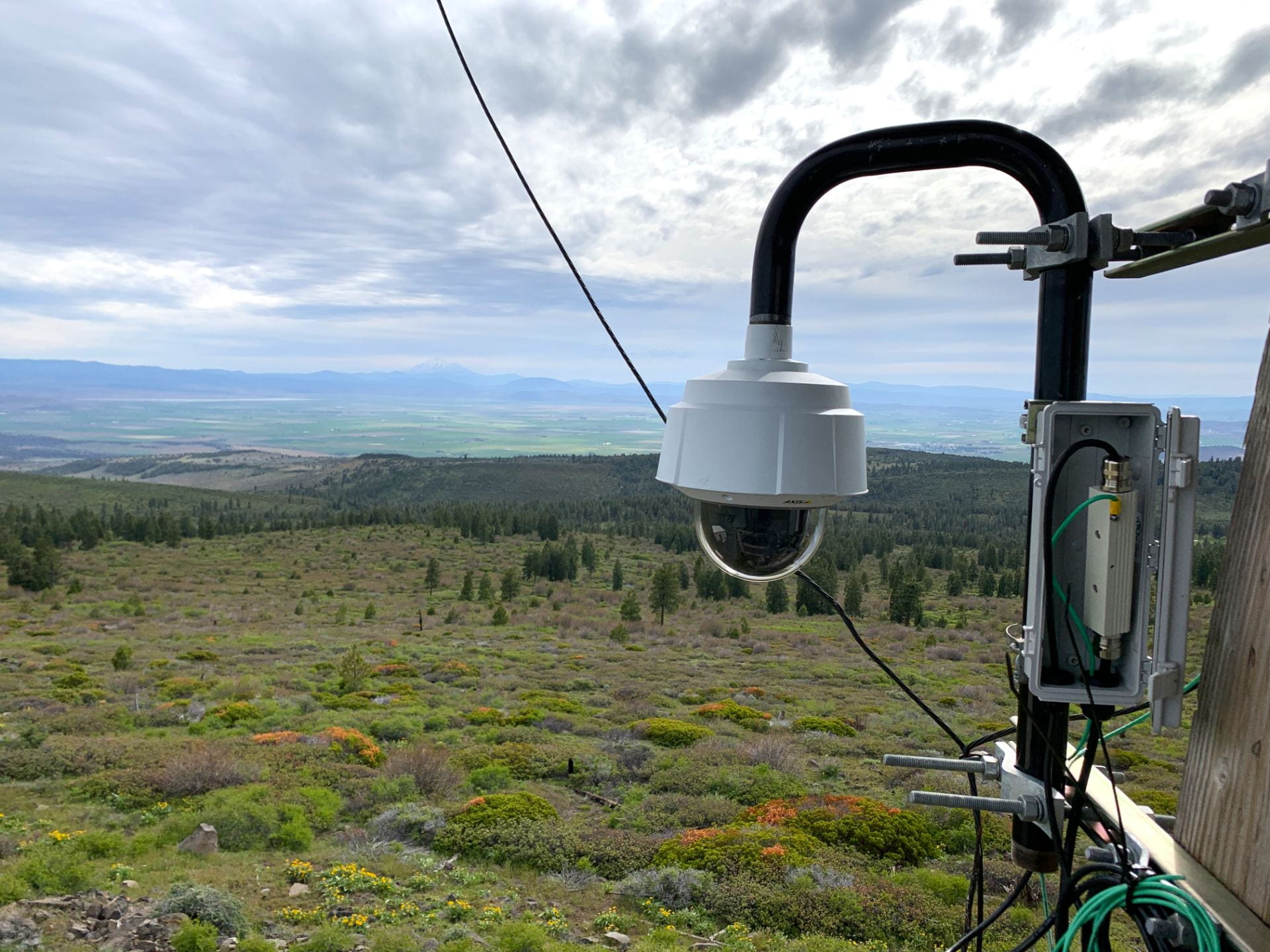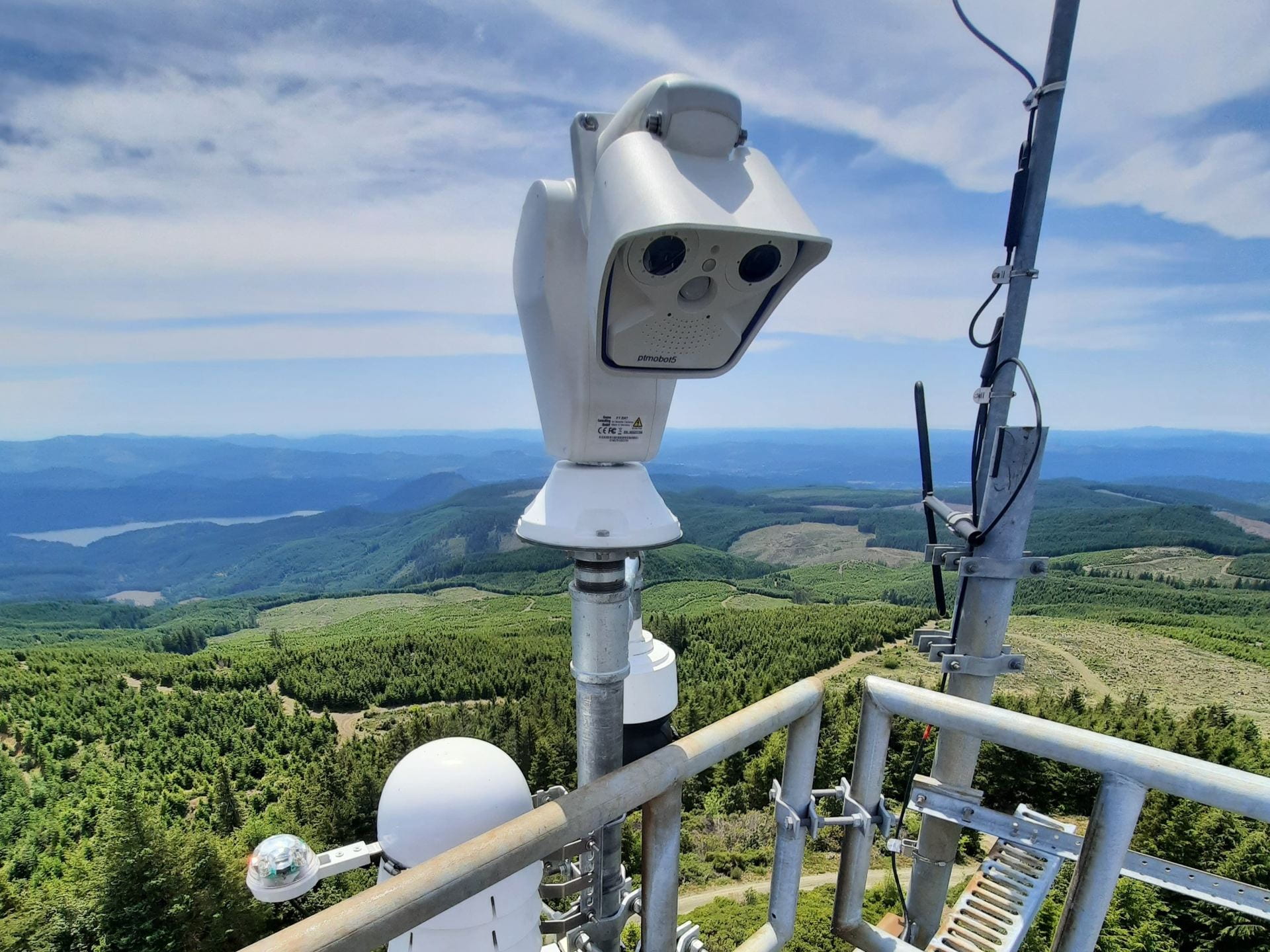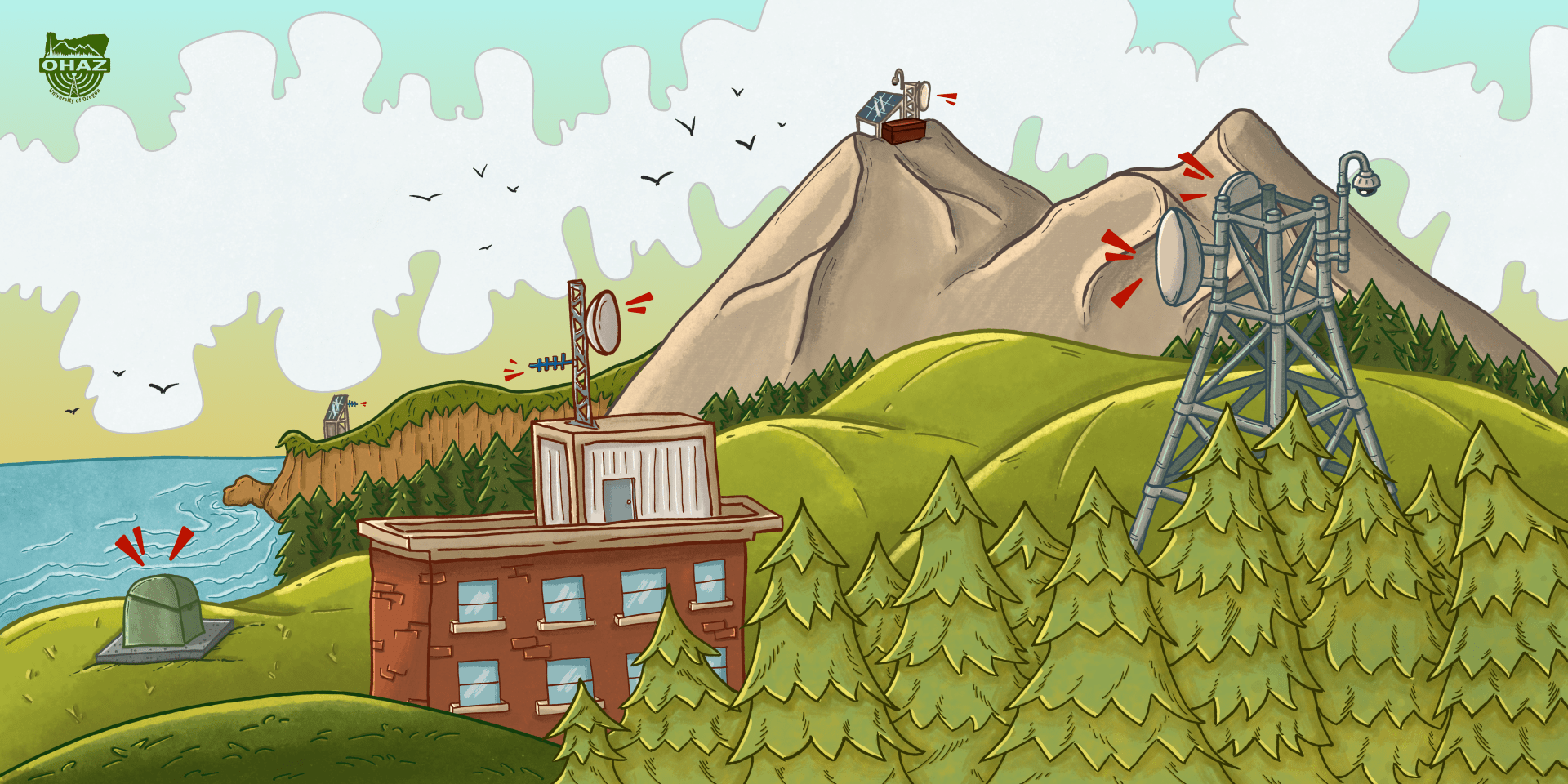Welcome to the Oregon Hazards Lab
Using Science, Technology, and Community Engagement to Understand, Detect, and Mitigate Multi-Hazards within the Pacific NorthwestWe Are Oregon, Rising
Learn how the mission and vision of OHAZ fit within Oregon Rising, the University of Oregon’s strategic framework to accelerate its impact on our state, our nation, and the world.
226+
PNSN Seismic Monitoring Stations Across Oregon
70+
OHAZ Wildfire Detection Cameras Across Oregon
4.2Mil
Oregonians With Access to ShakeAlert EEW Alerts
2018
Year OHAZ Was Founded
19
OHAZ Staff
4
Student Researchers
The Oregon Hazards Lab is a program within the University of Oregon's Department of Earth Sciences. We currently partner in these efforts:

Mobile Deployment Units
The Oregon Hazards Lab is building out a stock of lightweight portable wildfire camera kits that public land management agencies can rapidly deploy to monitor new ignitions.

Pacific Northwest Seismic Network
Along with the U.S. Geological Survey and the University of Washington, we monitor ground motion to better understand earthquake and volcano hazards and their impacts on communities in Oregon and Washington.

ShakeAlert® Earthquake Early Warning System
Since 2014, the Oregon Hazards Lab has been an instrumental partner in building and promoting the U.S. Geological Survey’s earthquake early warning system.

Wildfire Detection Cameras
With hundreds of mountaintop cameras installed throughout the western United States, this high-speed wildfire detection network provides firefighters and first responders a new way to spot and track wildfires.

Wildfire Smoke Sensors
As part of a partnership with the Department of Homeland Security, we deployed 30 smoke sensors across Western Oregon in 2023 and tested their effectiveness at detecting emerging wildfires.

Sage Continuum
We are building a continent-spanning network of smart sensors to improve the flow of information between scientists and the natural world.

News from the Oregon Hazards Lab
Oregon Department Of Forestry And University Of Oregon Hazards Lab Sign Memorandum Of Understanding To Strengthen Statewide Wildfire Hazard Monitoring And Preparedness
The Oregon Department of Forestry (ODF) and OHAZ have entered a new Memorandum of Understanding that formally establishes a statewide collaboration to improve early detection, monitoring, and response to natural hazards across Oregon.
Oregon Hazards Lab Newsletter – October 2025
The fall 2025 newsletter from the Oregon Hazards Lab provides important updates about the lab’s leadership, organization, and funding. We also recap the summer field season and share upcoming community events for the Great Oregon ShakeOut.
Great Oregon ShakeOut is Chance to Prep for the Big One
Oregon sits atop the Cascadia Subduction Zone and all University of Oregon campuses could be impacted by a major earthquake on this 620-mile fault. The Great ShakeOut earthquake drill on October 16 gives you an opportunity to practice how to protect yourself during an earthquake. Learn about preparedness resources on the University of Oregon campus.



